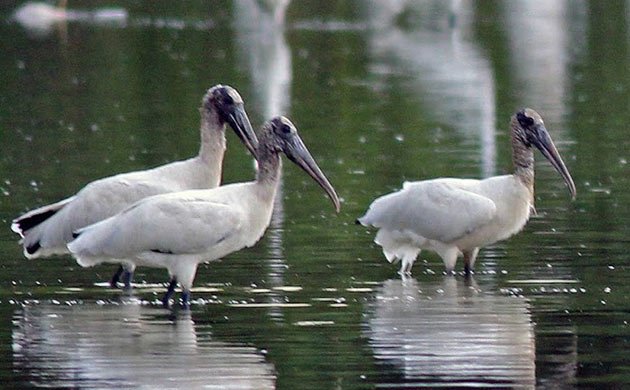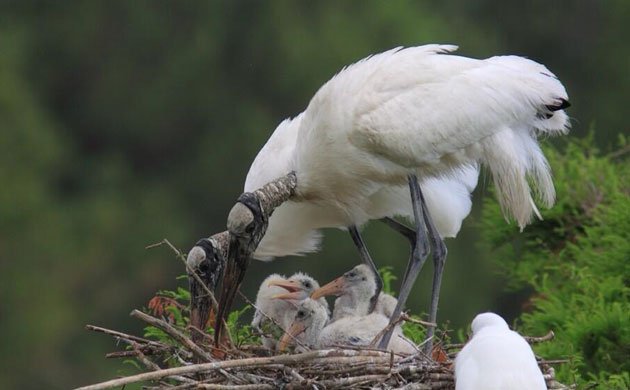
I was happy to read that the Wood Stork (Mycteria americana), a bird near and dear to me, was down-sited from the status of endangered to threatened species.
On June 25, Secretary of the Interior Sally Jewell announced that the U.S. Fish and Wildlife Service is down-listing the Wood Stork from endangered to threatened under the Endangered Species Act (ESA). The wood stork was listed as endangered in 1984, because the Florida population was dropping at an approximate rate of 5 percent per year. Some predicted that at that rate the wood stork would become extinct by the year 2000.
The Wood Stork occurs and breeds in Central and South America. However, birds in the U.S. are considered a distinct population segment, which is protected by the ESA and the Migratory Bird Treaty act.
So why I consider would storks near and dear? I have seen them foraging on sandy shores of rivers deep in the Amazon, enjoyed them in their raucous breeding colonies in the Everglades, flushed them out of canals during walks around my house, and perhaps more importantly contribute to their recovery. As a biologist working for the U.S. Fish and Wildlife Service, I was involved in various aspects of the species habitat protection largely on the regulatory arena.
As Secretary Jewell put it, it did not take just the Fish and Wildlife Service to get the stork to breed and produce more young. It took partnerships with state and local governments, non-government organizations, and the entire community to turn the population around from a steady decrease. Since 2004, the three-year averages (2003 to 2012) for nesting pairs ranged from 7,086 to 10,147, all above the 6,000 three-year average identified in the 1997 recovery plan as the threshold to consider reclassifying the species to threatened status.

Photo: U.S. Department of the Interior.
Wood Storks primarily breed in Central and South Florida. Historically, the Florida Everglades and the Big Cypress ecosystems supported large breeding colonies. Since listing, sound science, work towards habitat protection, acquisition and restoration and regulatory reforms its range has expanded north and west, and now includes portions of North Carolina and Mississippi, with significant nesting in Florida, Georgia, South Carolina and North Carolina.
Some conservation groups are concerned that down-listing the Wood Stork was premature given the rate of habitat loss in its current range. However, reclassifying the Wood Stork from endangered to threatened does not diminish protection measures for the bird under the ESA. The conservation partnerships forged over the years will continue to work toward to fully recovery of this iconic bird.
As with the Bald Eagle, which was successfully delisted from the ESA, the conservation work and recovery strategies for the Wood Stork are expected to result in an eventual delisting of the stork in the not too distant future.











Leave a Comment